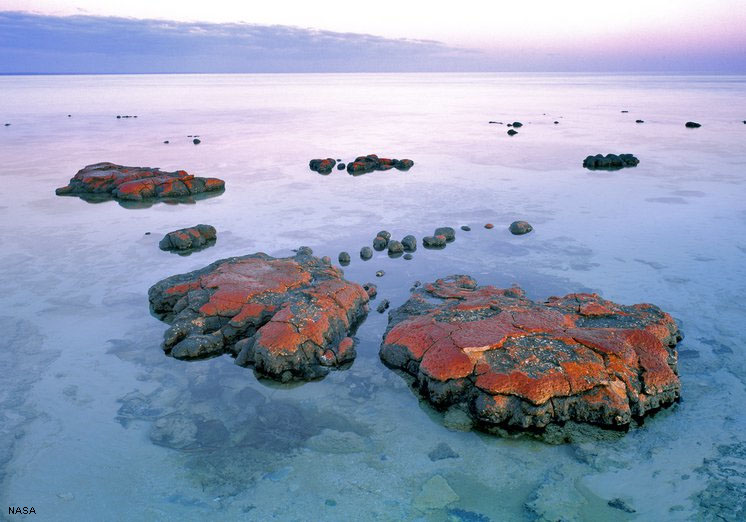
3.9 billion years ago, cells invent Photosynthesis. Small creatures learn to capture the sun and store the energy in chemical bonds. They are able to capture 18 times as much energy from their environment than their ancestors could. This is based on a new molecule, chlorophyll, based on a ring of carbon atoms with a magnesium atom at its core. Thus, they invent a new source of food for the growing bacterial population of Earth as they use the captured solar energy to extract carbon to build their bodies from CO2. In the process, however, they give off oxygen a toxic poison to the anaerobic life of that time. For hundreds of millions of years the oxygen cannot accumulate as it oxidises iron, hydrogen and other elements. Brought to the surface of the Earth in lava, the iron had originally entered the sea in its soluble ferrous form. The moment it came into contact with cyanobacterial oxygen however, the seas began to rust! The iron oxidised and fell to the ocean floor as insoluble rust. Some of the banded iron formations created at this time are over 2.5km thick. Eventually however all available elements have been oxidised. The fallout from the rusting seas swept the water free of iron allowing all subsequent oxygen waste released by the world’s marine bacteria to leak into the atmosphere. Oxygen piles up in the atmosphere, threatening all life. This will eventually turn the skies blue and provide the energy resource upon which most future evolution will depend.
